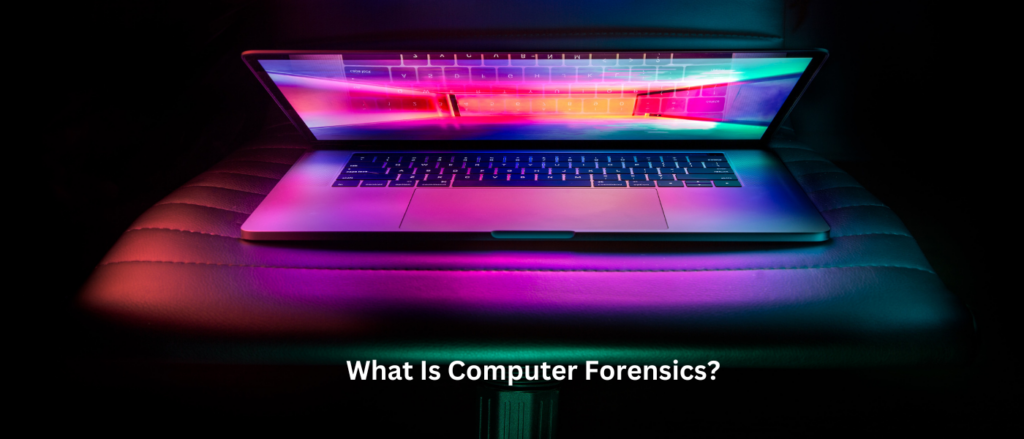A Guide To Using NIST and Cyber Essentials To Build a Robust Cyber Security Strategy for Small Businesses.
Businesses need to safeguard their assets, customer data, and reputation which can often be a daunting task, especially for the SME market. Not all organisations can have an inhouse IT or Cyber Security Department. If you are a business owner with no technical knowledge, or team behind you this article is for you!
The National Institute of Standards and Technology (NIST) Frameworks and Cyber Essentials offer comprehensive guidelines for establishing and enhancing cyber security practices. This article provides a step-by-step guide for small business owners to leverage these frameworks in creating a robust cyber security strategy for 2024.
Understanding the NIST Frameworks:
The NIST Cyber Security Framework (CSF) is a set of guidelines designed to help organisations of all sizes manage and mitigate cyber security risks. It consists of five core functions: Identify, Protect, Detect, Respond, and Recover. Small businesses can use this framework as a roadmap to build and enhance their cyber security capabilities.
Planning and Assessment:
The five core functions of NIST set out how an organisation can follow industry standards in the following areas:
- Identify:
Begin by conducting a thorough assessment of your business’s assets. Identify critical data, systems, and personnel. Understanding the value and importance of your assets is fundamental to implementing effective cyber security measures.
For example, identify what customer information you store, payment data you process, and proprietary information crucial to your operations. This awareness forms the foundation for the subsequent steps in the NIST Framework.
- Protect:
Develop safeguards for your critical assets based on the insights gained during the identification phase. This involves implementing access controls, encryption, and employee training programs. Consider adopting security best practices such as the principle of least privilege to limit access to sensitive information.
To illustrate, encrypt sensitive customer data both in transit and at rest. Provide employees with cyber security training that emphasises the importance of strong password practices and recognising social engineering attempts.
- Detect:
Establish mechanisms to detect cyber security events promptly. This involves implementing intrusion detection systems, monitoring logs, and conducting regular security assessments. Early detection is crucial in minimising the impact of a potential breach.
As an example, deploy advanced threat detection tools that can identify unusual patterns of activity on your network. Conduct regular penetration testing to proactively discover vulnerabilities before attackers can exploit them.
- Respond:
Develop a robust incident response plan outlining the steps to take in the event of a cyber security incident. This should include communication protocols, coordination with law enforcement, and a plan for business continuity.
For instance, create a designated incident response team trained to handle various scenarios. Regularly conduct simulations to ensure the team is well-prepared to respond effectively.
- Recover:
Plan for the recovery of business operations after a cyber security incident. This includes restoring systems, analysing the incident for lessons learned, and updating security measures to prevent future occurrences.
Consider implementing automated backups of critical data and systems to expedite the recovery process. Evaluate and learn from each incident to continuously improve your cyber security posture.
Engaging with Third Parties:
Small businesses often rely on third-party vendors for various services including IT support, Cyber Security Consultancy and governance. When engaging with third parties, it is important to consider the following:
- Vendor Assessment:
Evaluate the cyber security practices of your vendors. Ensure they align with your business’s security standards. Include cyber security clauses in vendor contracts to enforce security requirements.
As an illustration, before partnering with a cloud service provider, review their security certifications and protocols to ensure they meet industry standards and comply with data protection regulations.
- Regular Audits:
Conduct regular cyber security audits of third-party vendors to verify their adherence to security standards. This is especially important for vendors who handle sensitive data or have access to critical systems.
For example, schedule periodic assessments to ensure that your vendors’ security measures are continuously meeting the agreed-upon standards.
- Collaboration:
Foster open communication with vendors regarding cyber security concerns. Establish a collaborative approach to address potential risks and implement shared security measures.
Develop a mutually beneficial relationship where information sharing is encouraged, enabling both parties to enhance their cyber security postures collectively.
Securing your Critical Assets:
- Data Protection:
Implement encryption and access controls to protect sensitive data. Regularly back up critical data and ensure secure storage practices.
As an example, encrypt customer data using industry-standard algorithms and establish a secure backup system to prevent data loss in the event of a ransomware attack.
- Network Security:
Secure your network with firewalls, intrusion detection/prevention systems, and regular security updates. Consider implementing multi-factor authentication to enhance access controls.
For instance, regularly update firewall rules to adapt to emerging threats and implement multi-factor authentication for remote access to sensitive systems.
- Employee Training:
Train employees on cyber security best practices, including recognising phishing attempts, using strong passwords, and reporting security incidents promptly. Conduct regular training sessions and simulated phishing exercises to keep employees vigilant and informed about the latest cyber threats.
- Regular Updates:
Keep software, operating systems, and antivirus programs up-to-date to address known vulnerabilities. Develop a patch management strategy to ensure that all systems and software are regularly updated, minimising the risk of exploitation through known vulnerabilities.
Cyber Essentials Compliance:
Cyber Essentials is a certification program that outlines basic cyber security measures for organisations. Small businesses can use Cyber Essentials to ensure they have fundamental security controls in place. Consider the following:
- Boundary Firewalls and Internet Gateways:
Implement secure network perimeters to protect against external threats. Utilise firewalls and intrusion detection systems to monitor and control incoming and outgoing network traffic, preventing unauthorised access to your network.
- Secure Configuration:
Ensure that systems are securely configured to reduce vulnerabilities. Regularly review and update system configurations to adhere to security best practices, minimising the risk of misconfigurations that could be exploited by attackers.
- Access Control:
Control access to systems and data based on the principle of least privilege by limiting user access to only the information and systems necessary for their roles, reducing the risk of unauthorised access and data breaches.
- Malware Protection:
Implement anti-malware solutions to protect against malicious software by deploying robust antivirus and anti-malware tools to scan for and remove malicious software, reducing the risk of infections that could compromise sensitive data.
- Patch Management:
Regularly update and patch systems to address known vulnerabilities. Establish a systematic approach to applying patches promptly, ensuring that your systems are protected against known vulnerabilities that could be exploited by cybercriminals.
Creating a robust cyber security strategy for a small business requires a proactive approach that integrates the NIST Frameworks and Cyber Essentials. By identifying, protecting, detecting, responding, and recovering in alignment with NIST guidelines and adhering to Cyber Essentials principles, small business owners can fortify their defences against cyber threats. Engaging with third parties responsibly and securing critical assets are integral components of a comprehensive cyber security strategy that aims to protect both the business and its stakeholders in 2024 and beyond.
If you would like more information about Cyber Essentials and how it can help secure your business contact the team here.





